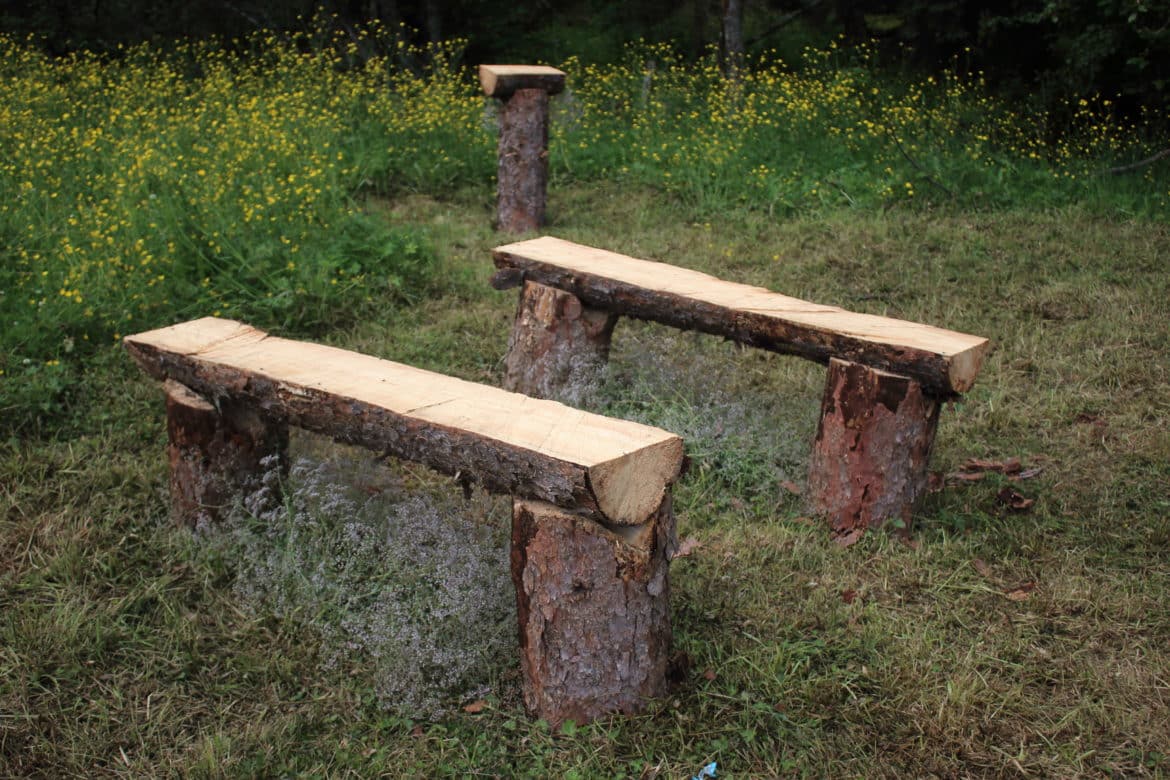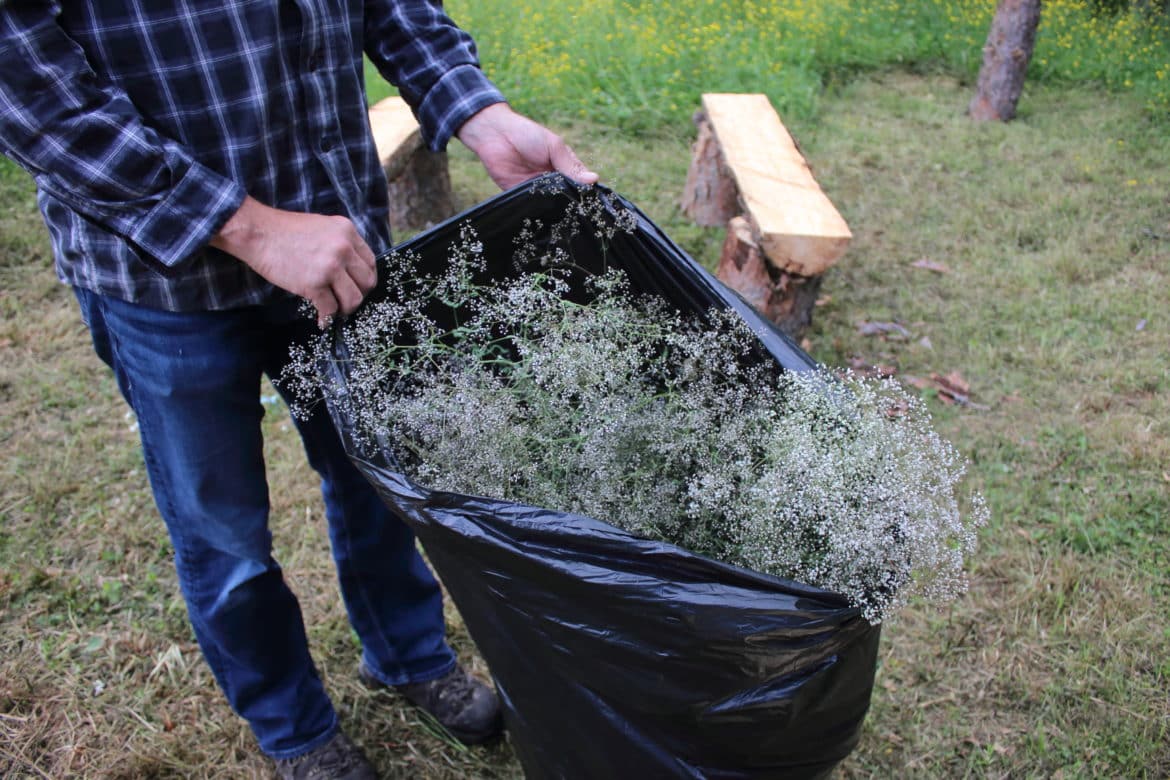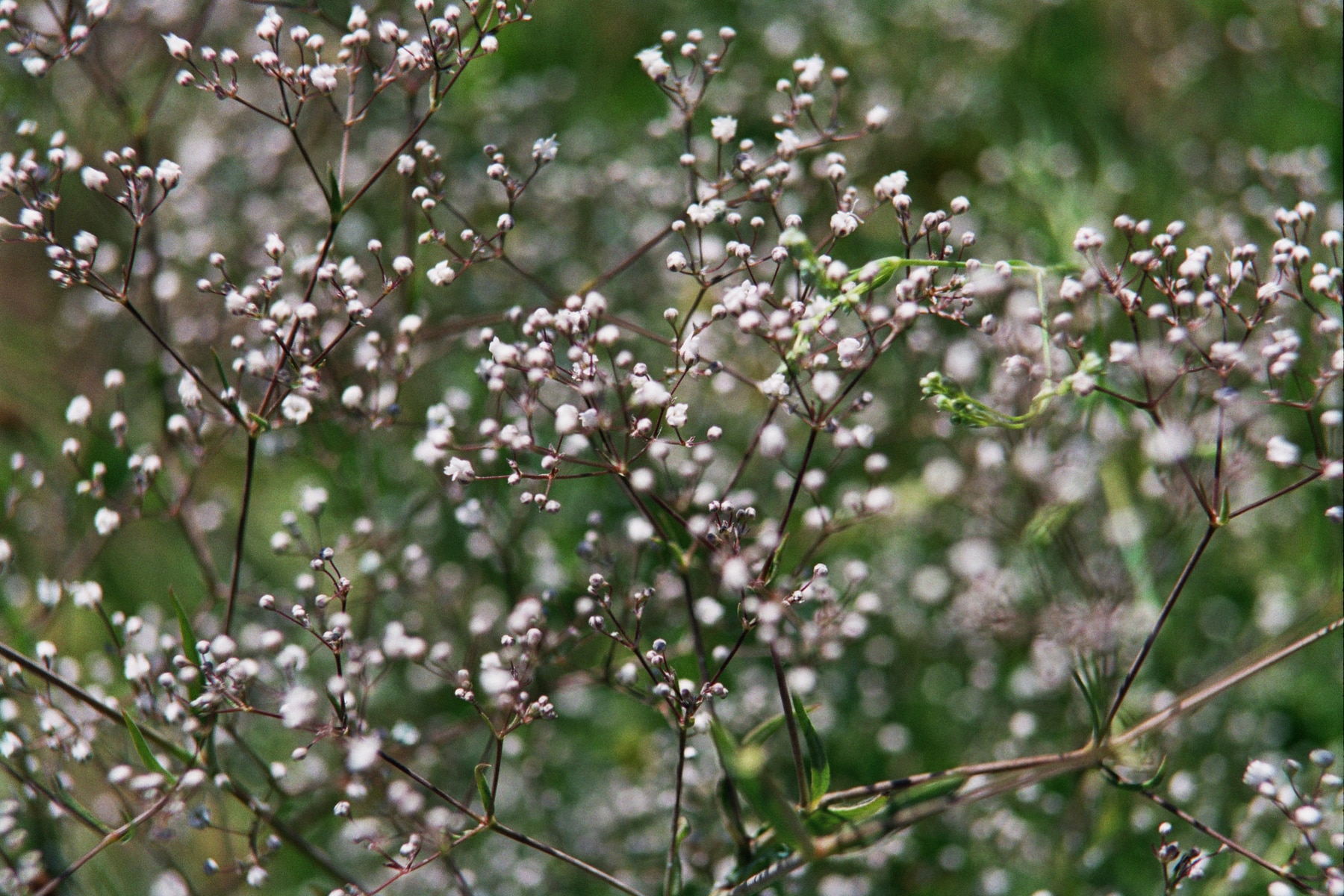By Megan Blackmore | July 12th, 2022
On Saturday night I got an interesting text from my dad asking if Baby’s breath (Gypsophila) is an invasive species. He explained that he had been dirt biking around Whitecroft that day (a small village about 25min outside of Kamloops). While out, he came across a beautiful meadow with a small area that had been cleared. There were a few handmade log benches and an altar. It was clear that there had been a wedding there recently. Rustic, split logs were set up as benches for the guests and below the benches, large bundles of delicate Baby’s breath flowers had been placed. My dad thought, “what a nice place for a wedding,” and continued on with his ride.

In the past, that’s all that there would be to tell but, over the last year, I have talked my family and friends’ ears off about invasive species many times. I’m sure it gets annoying at times but because of this, my dad couldn’t stop thinking about what he came across. He knew from all our conversations that if he saw plants that looked out of place, he should report it. So, he let me know what he saw and I immediately told him that what he found was very concerning.
Baby’s breath is an aggressive invasive species that can produce up to 10,000 seeds per plant! It easily invades grazing land and reduces the native grasses and forage for grazing animals and wildlife. Although the Baby’s breath he found was cut, they still had the potential to produce seeds and spread. So, the very next morning he took me out to the area and we gathered every last bit that we could find, bagged it up, and got it out of there.

We know that the people who left it behind didn’t intend to risk spreading invasive species but it goes to show how important education around the topic is! There are so many ways invasive species can be spread around that we may not always realize. So spread the word, not the invasive species!
Megan is a Learning Coordinator with ISCBC. She has a strong passion for botany and an ever-increasing interest in all of the other unique and interconnected parts of our diverse ecosystems. Megan is also a Lake Blitz volunteer with Living Lakes Canada, who recently featured her in their debut article series. You can reach Megan at mblackmore@bcinvasives.ca
Share


















